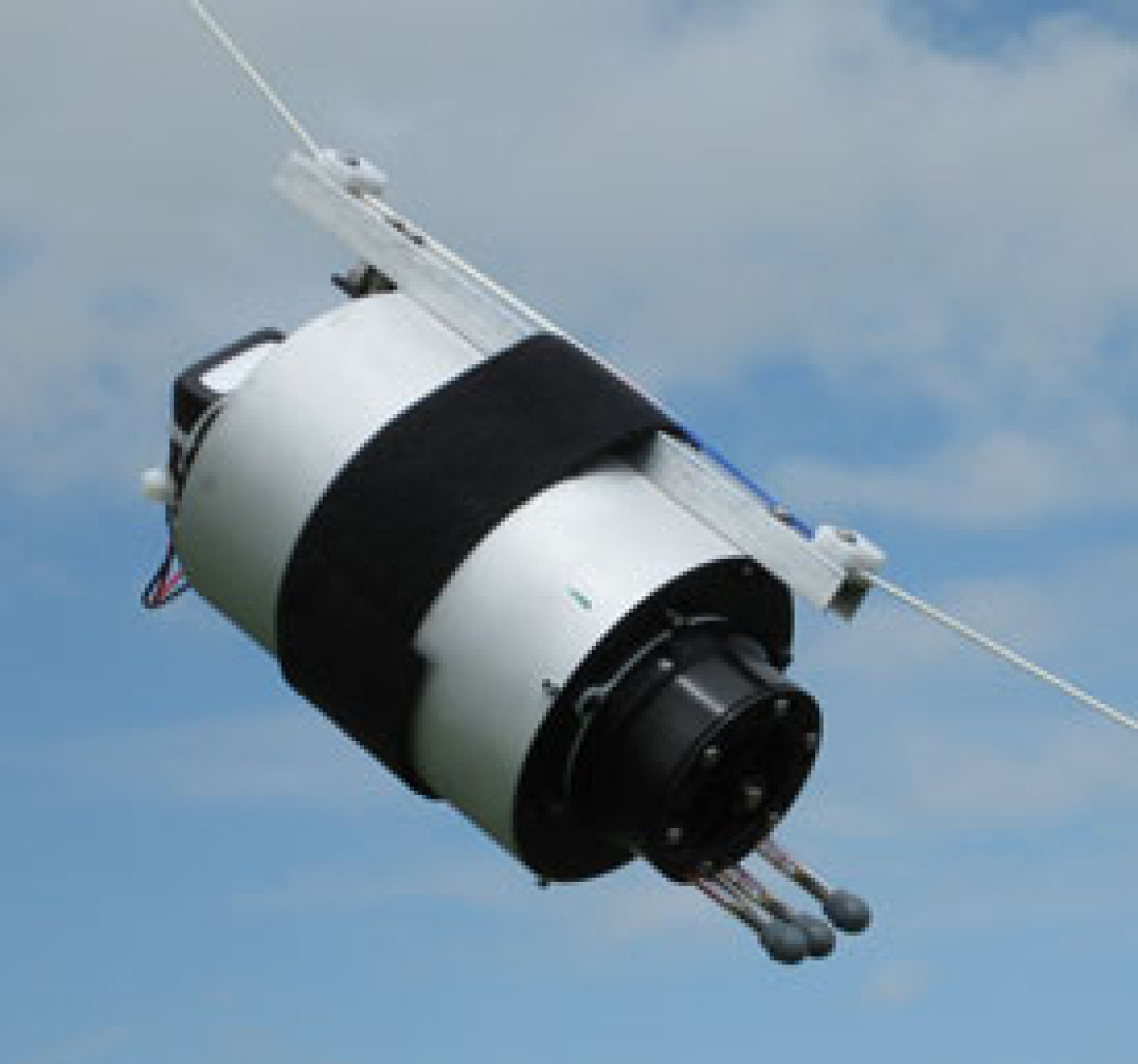Researchers at the Office of Fossil Energy's National Energy Technology Laboratory have discovered an innovative way to use bees, pollen, and helium-filled balloons to verify that no carbon dioxide (CO2) leaks from carbon sequestration sites.
Office of Fossil Energy and Carbon Management
July 29, 2009
The carousel, lifted by Apogee's balloon, carries sorbent tubes aloft to sample for tracer above the carbon dioxide injection area.
Washington, DC - Researchers at the Office of Fossil Energy's National Energy Technology Laboratory (NETL) have discovered an innovative way to use bees, pollen, and helium-filled balloons to verify that no carbon dioxide (CO2) leaks from carbon sequestration sites. These new methods are an excellent way to determine environmental impact without disrupting habitats surrounding sequestration sites and can ensure the effectiveness of carbon storage options used to prevent CO2, a greenhouse gas, from escaping into the atmosphere.
In a technique developed by NETL, chemical tracers were co-injected at low levels to fingerprint the CO2 during storage, differentiating it from natural carbon dioxide. Researchers will also determine if pollen collected by bees contains measurable quantities of tracer, or if bees bring back tracer from direct contact with foliage.
NETL researchers, in cooperation with bee experts at Montana State University (MSU) in Bozeman, placed hives about 150 meters upwind and downwind from a controlled CO2 release source marked with tracers. A third control hive was located some distance from the test plot.
Along with the samples of the bees' pollen taken from the hive, sorbent packets were placed near the hive entrances to monitor hive ventilation gas for tracer. A third monitor was placed about 25 meters from each hive in order to account for any background levels of tracer near the hive. Monitoring consists of exposing sorbent in a small packet of sorbent tubes to the atmosphere. The tubes are heated while helium gas is flowing through them. This desorbs the tracer which is then analyzed.
Atmospheric tracer levels were also monitored throughout the test field using an extensive grid of monitors, and a light detection and ranging system was employed by MSU researchers to correlate field tracer levels with bee foraging locations.
NETL researchers contracted Apogee Scientific to use a large helium-filled balloon to elevate a carousel containing sealed sorbent tubes above the field for sequential exposures of sorbent tubes at known times and known elevations to determine if atmospheric plume monitoring of tracer will be a feasible approach. Results from this study will be applied to more extensive experiments in atmospheric plume monitoring.
NETL conducted the studies at the Center for Zero Emissions Research and Technology research site on an agricultural field at MSU. Researchers are now conducting laboratory analysis of the tracer levels in the samples.
<p>[email protected]</p><p> </p>

